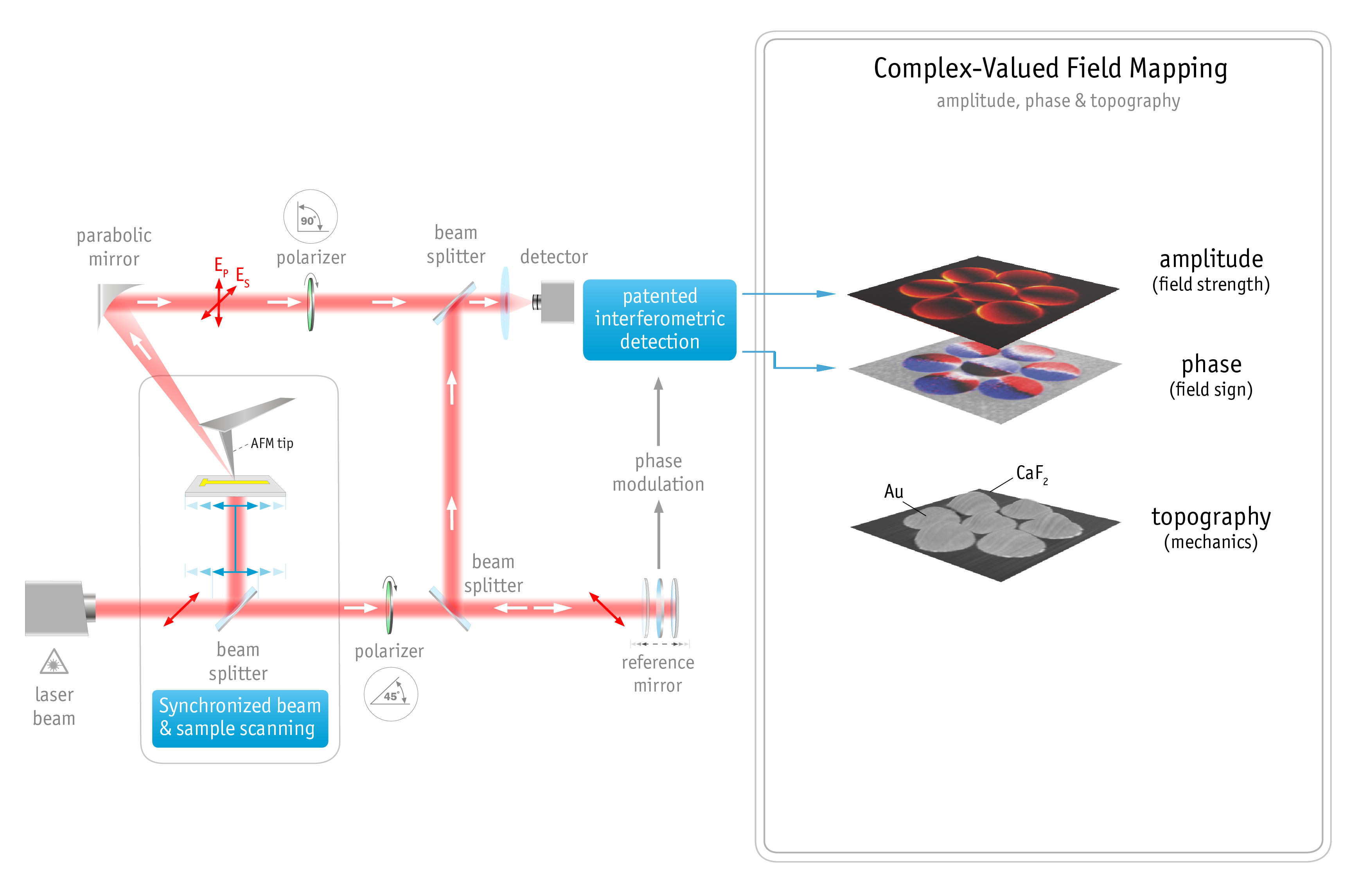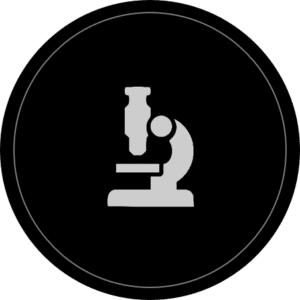Transmission s-SNOM
maps complete local vector field (amplitude & phase) without retardation effects
Transmission s-SNOM (scattering-type Scanning Near-field Optical Microscopy) provides polarization-resolved field mapping across visible and IR spectral ranges with nanoscale spatial resolution. It enables comprehensive characterization of plasmonic nanostructures, antennas and waveguides, as well application in IR photonics that require elimination of retardation effects and/or mapping under fixed illumination conditions.
neaspec transmission s-SNOM is based on a Mach-Zehnder interferometer. The illuminating laser beam is split into two parts: the sample and the reference. The former is used for sample illumination, which excites it and creates a field distribution. A sharp AFM tip acts as a local dipole that probes the electric field and scatters it. This scattering is collected by a parabolic mirror and sent to the detector, where it is recombined with the reference beam to provide interferometric measurements. A polarizer in the sample arm allows for resolving polarization. Jittering the of the reference mirror and subsequent patented PseudoHeterodyne signal processing delivers simultaneously field amplitude and phase with complete background suppression. Synchronized in-plane movement of the sample stage and the illumination allow for field mapping while keeping the illumination spot stationary with respect to the sample.











